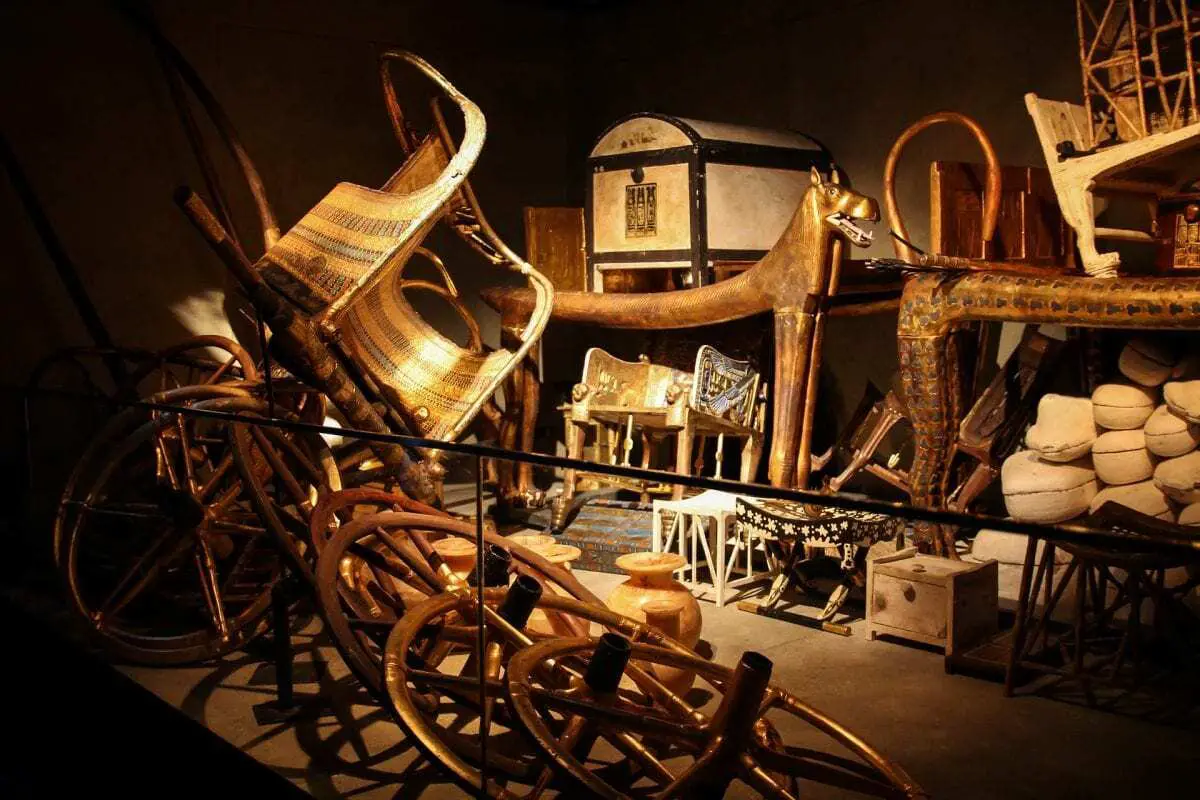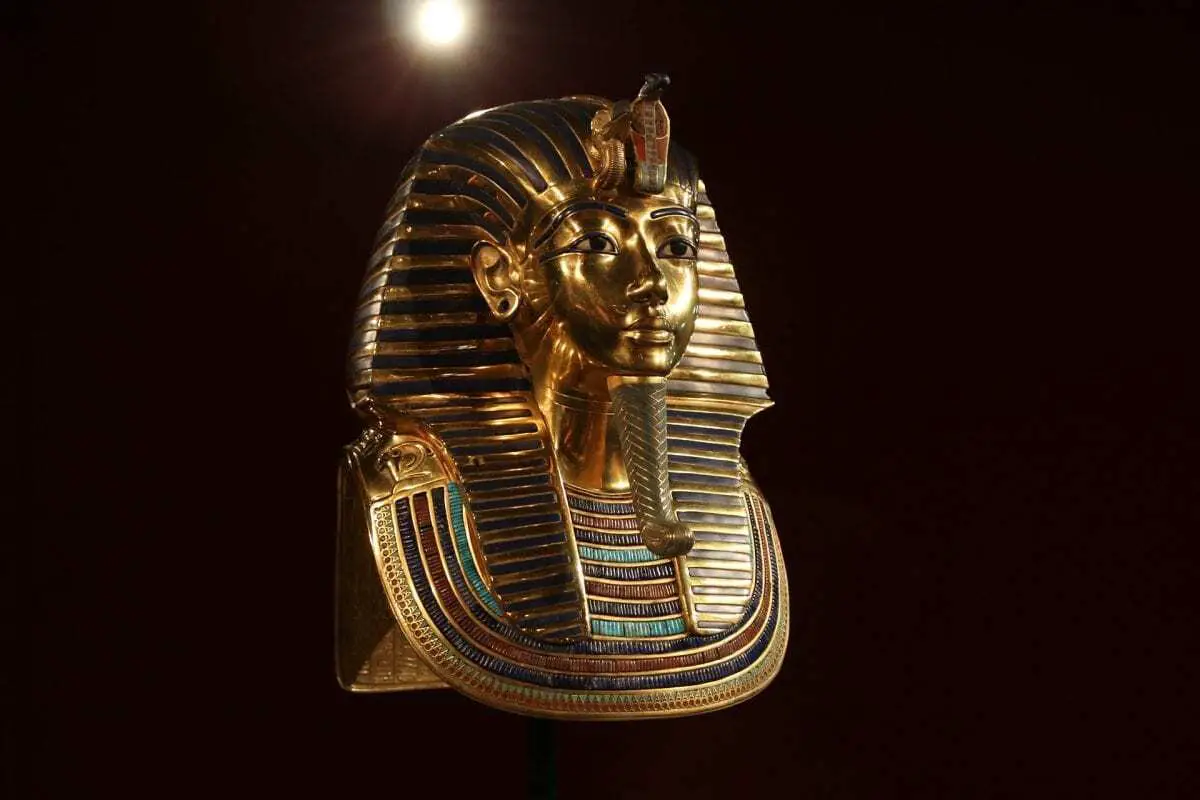Following the amazing discovery of the Egyptian king’s near-intact tomb by archaeologist Howard Carter in 1922, Tutankhamun became a household name worldwide.
The King Tut phenomenon is firmly entrenched in popular culture, yet how much do we really know about this short-lived pharaoh? Not a great deal, but enough to conclude that his modern-day fame far outweighs his significance in ancient times.
Tutankhamun was born in 1341 BCE into an Egypt ruled by the infamously heretical king Akhenaten. To the rude shock of a society whose very fabric was built upon reverence for a multitude of deities, pharaoh Amenhotep IV (“Amun is satisfied”) in 1347 BCE introduced the concept of worship of one single god – the Aten, or sun-disk – and changed his name to Akhenaten (“living spirit of Aten”).
At the time, the cult of the sun god Amun was extremely powerful and the move towards the new god Aten was likely designed as an attempt to reduce the political power of the priests of Amun, at least in part.
Akhenaten’s predilection for religion led him to neglect his military duties, including the empire’s border protection, and during his reign Egypt lost possession of Syria, the Phoenician coast and strategic fortresses at Megiddo and Jerusalem. Akhenaten died in about 1335 BCE and was succeeded briefly by Smenkhkare, of whom we know very little, before Tutankhamun took the throne in 1332 BCE at the tender age of eight.
A DNA analysis of eleven royal mummies (including Tutankhamun’s) conducted by Zahi Hawass in 2010 suggests that Tutankhamun was Akhenaten’s son. However, this claim is rejected by some experts who believe that Tutankhamun’s marriage to Ankhsenamun, the daughter of Akhenaten, was in order to legitimise his claim to the crown. Tutankhamun (“living image of Amun”) and Ankhsenamun (“she lives for Amun”), both around eight years old at the time of their marriage, were born Tutankhaten and Ankhesenpaaten respectively, both changing their names away from honouring Aten to the traditional god Amun.
With the new king ascending the throne at such a young age, it was not Tutankhamun himself but his advisors who set about erasing the cult of the Aten, restoring the worship of Amun and re-expanding Egypt’s borders. Authority lay with the priests of Amun and the powerful General Horemheb, who was pivotal in regaining much of the territory lost under Akhenaten’s rule.
Tutankhamun was pharaoh of Egypt for only ten years, dying unexpectedly in 1323 BCE at the age of nineteen. A large hole found in the back of his skull first prompted theories of assassination, until it was discovered that the hole had been made post-mortem. The cause of death is still the subject of much debate, with possibilities including malaria, complications from a broken leg, an inherited form of epilepsy, or an accident during a hunting expedition or military campaign.
Just as much debate has been stirred about Tutankhamun’s character. Some have painted him as a sickly, inactive king, suffering from a bone disease and a deformed foot. Others have taken scenes from the king’s tomb depicting him engaged in hunting and warfare as evidence of an active warrior king. Tutankhamun’s true character and his cause of death are two mysteries that may never be conclusively solved.
Due to Tutankhamun’s sudden demise, the tomb intended for him was not ready in time for his burial. As a result, he was instead interred in a smaller tomb originally intended for his royal vizier. Similarly, some of the furniture in the tomb had been made not for Tutankhamun but for other members of his family, and even one of his death masks shows a markedly different face and was probably not intended for him.

Though there are those who believe that Tutankhamun was directly responsible for undoing the damage caused by Akhenaten’s reign and that he even led the Egyptian armies in battle, the general consensus (and most of the evidence) refutes this. Tutankhamun was a minor king whose short rule at a young age was dictated by his more powerful seniors, especially Horemheb, who became his successor.
The discovery of the riches of his tomb in 1922 plucked Tutankhamun from 3,000 years of anonymity beneath the sands of Egypt and thrust him into the coveted realm of immortality. His name, so long forgotten, will now be remembered for eternity. Ironically, one of Egypt’s most insignificant rulers has become a global symbol for its ancient civilisation.
Header Image : Funerary mask of Tutankhamun : Public Domain
Written by: Robyn Antanovskii
References:
Butler, D. 2010. King Tut’s death explained?, Nature 463:7283 (16 February 2010).
Covington, R. 2005. King Tut: The Pharaoh Returns!, Smithsonian (June 2005).
Edwards, I.E.S. 1972. The Tutankhamun Exhibition, Nature 236 (14 April 1972).
Geddes & Grosset. 1997. The Religious Revolt of the Poet King, Ancient Egypt: Myth & History, The Gresham Publishing Company.
Hamzelou, J. 2012. Tutankhamun’s death and the birth of monotheism, New Scientist 215:2881 (8 September 2012).
Hawass, Z. 2011. Mummy Mystery, National Geographic Explorer 10:5 (March 2011).
Marchant, J. 2012. Golden boy: Jo Marchant uncovers a mixed hoard in a history of Tutankhamun and the discovery of his tomb, Nature 483:7387 (1 March 2012).
Raymond, W.R. 2010. Warrior Tut: sculptures from Luxor prove the “Boy King” was the scourge of Egypt’s foes, Archaeology 63:2 (March/April 2010).
Rose, M. 2010. Who’s the ‘real’ Tut? What DNA, CT scans, and archaeology tell us, Archaeology 63:3 (May/June 2010).
Rothstein, E. 2010. Mystique of Tut, increasing with age, The New York Times (23 April 2010).
Scarre, C. & Fagan, B. 2003. Egyptian Civilization, Ancient Civilizations, Prentice Hall.
Tutankhamun, BBC History website.
http://www.bbc.co.uk/history/historic_figures/tutankhamun.shtml





